Why are the leaves on my peace lily turning brown?
Identify the causes for your peace lily leaves turning brown, and save your plant with our expert tips - before it's too late

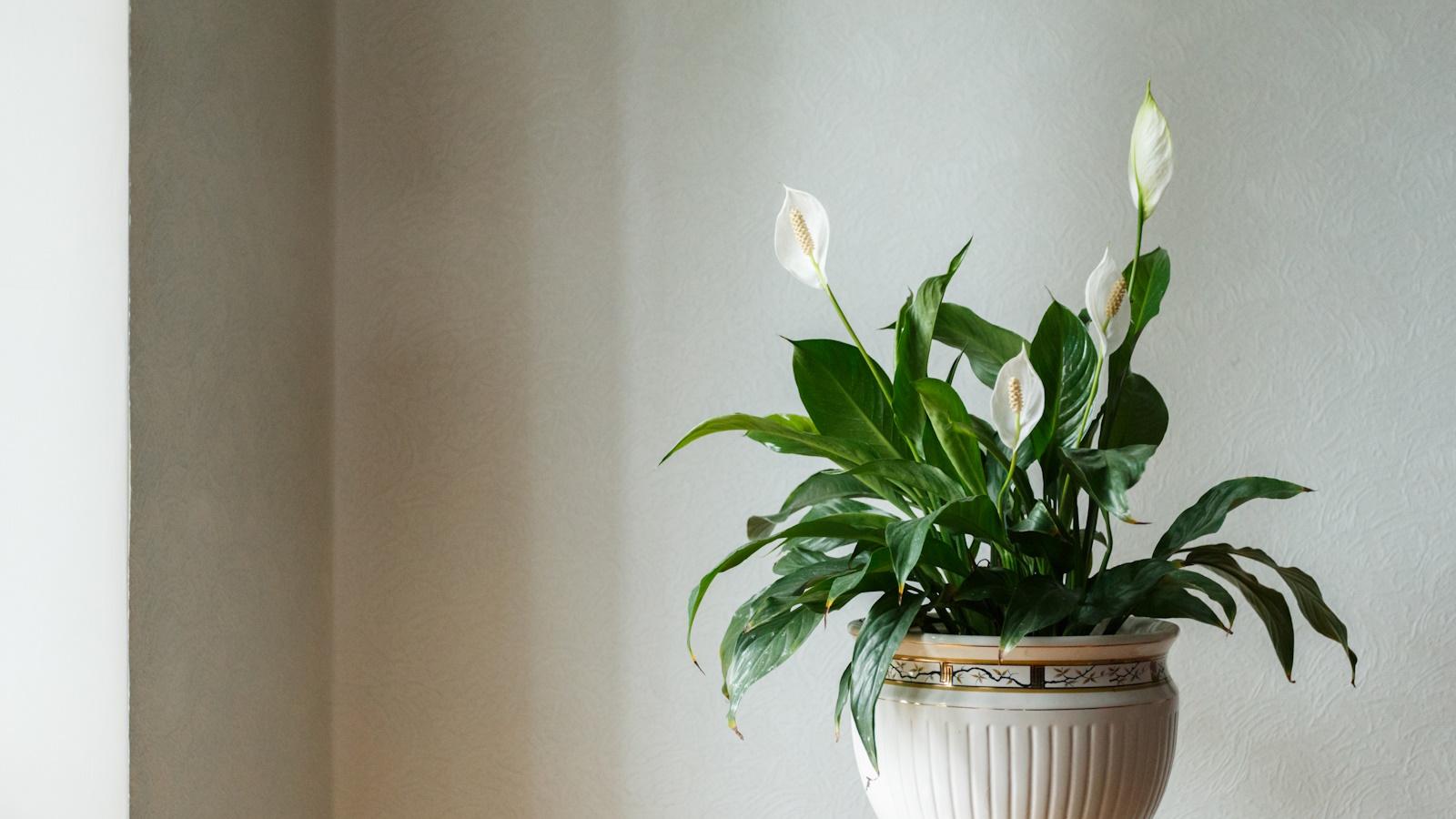
Peace lilies, also known as Spathiphyllum are a common houseplant with air-purifying qualities and colorful bracts.
Growing and maintaining peace lilies is normally an easy task, however, there are a number of factors that are useful to know in order to keep your plants looking their best. Though they normally bounce back, brown leaves in peace lilies can be a sign of several potential problems, indicating you need to invest some time in peace lily care.
Our experts have identified five common causes for leaf browning, so you can identify the root cause and understand the best method of treatment for your plant.
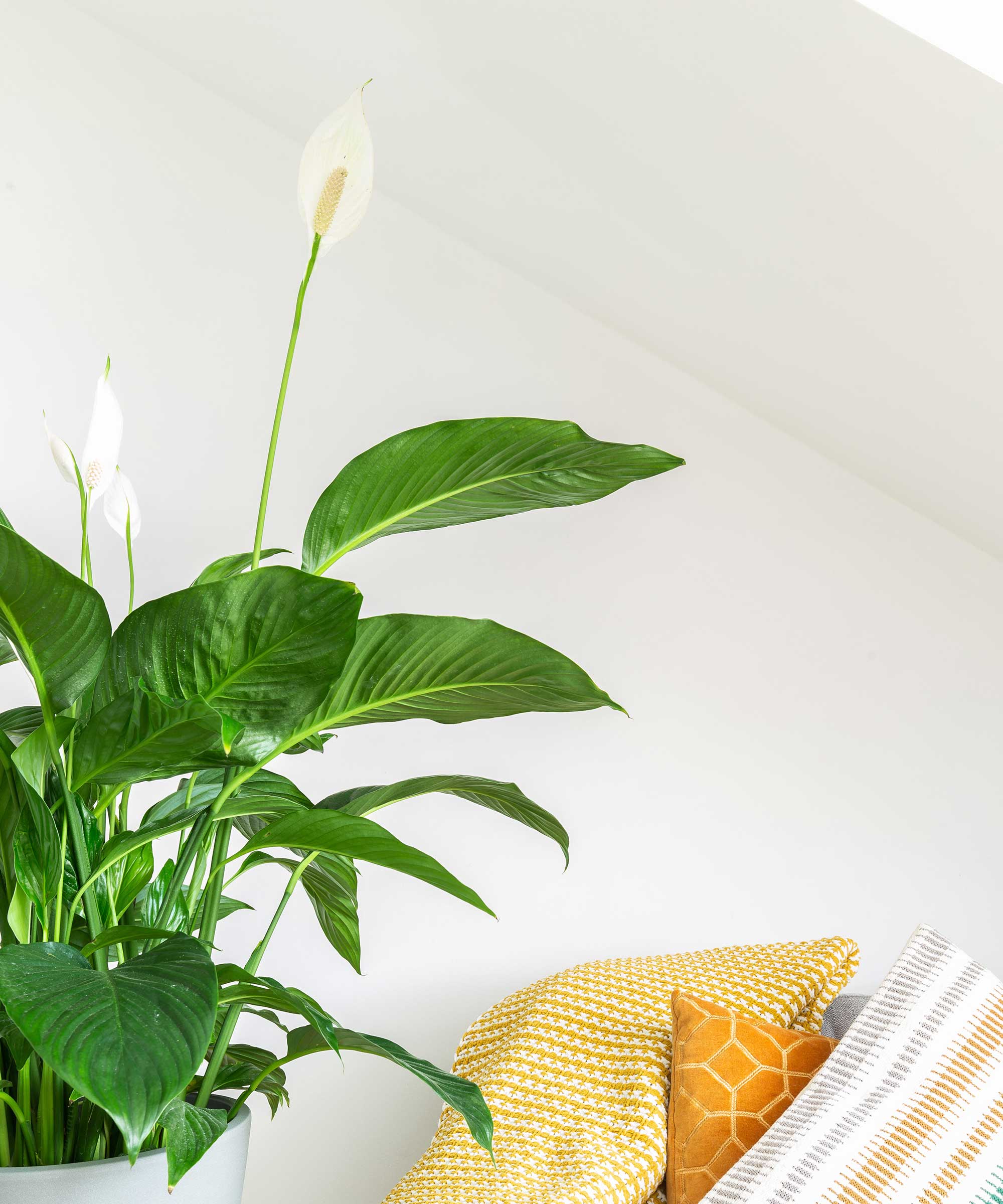
Why are the leaves on my peace lily turning brown?
If you notice the leaves of your peace lily are turning brown, there are several potential reasons for this issue. Here are five of the most common causes and expert remedies.
1. Watering
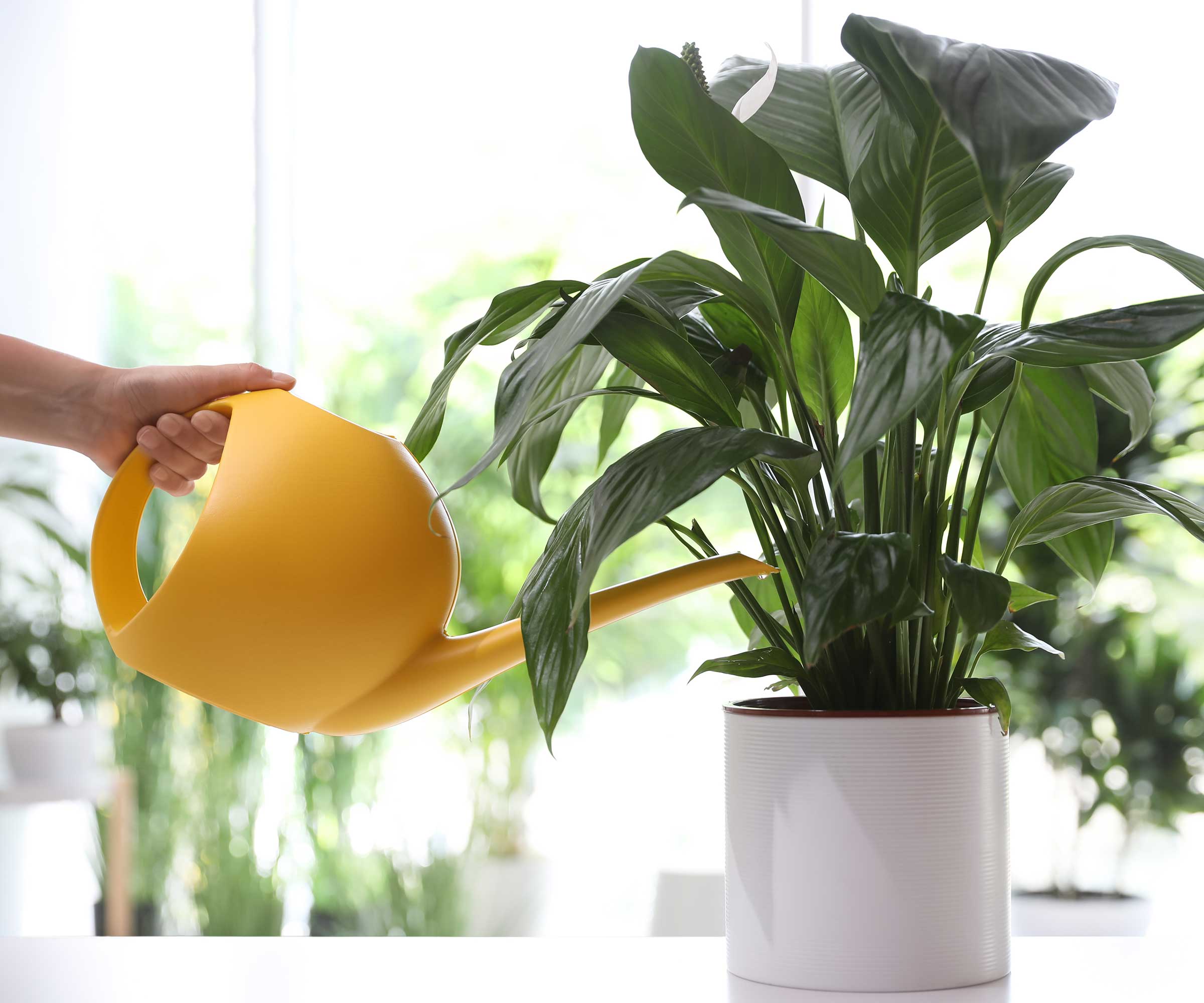
Overwatering or underwatering can cause the leaves of peace lilies to turn brown. These plants prefer consistently moist soil but not waterlogged. When it comes to houseplants, soggy soil is something to be avoided at all costs. If the soil is too wet, the leaves can react by turning brown.
These circumstances hinder oxygen from getting to the roots and promote the growth of fungi. Under these circumstances, you can run into the common issue of root rot, which, if left untreated, can be fatal to houseplants.
Ensure you’re watering the plant when the top inch of soil feels dry to the touch. Even if you are giving your plant the proper quantity of water, if the container has inadequate drainage, it's probable the roots are sitting in oversaturated soil for far longer than they should.
Design expertise in your inbox – from inspiring decorating ideas and beautiful celebrity homes to practical gardening advice and shopping round-ups.
We’ve explored different plant containers on the market and like the Keilson Ceramic Pot Planter from Wayfair. Made from natural stone, this planter has sufficient drainage holes to help mitigate any watering issues.
2. Temperature

Excessive temperature swings can stress peace lilies and result in browning foliage. The ideal temperature range for these plants is 65 - 75F. And remember to keep your plant away from cold drafts.
‘Pick a spot distant from air conditioning and heater vents,’ says plant expert Autumn Hilliard-Knapp. ‘And try to keep leaves away from chilly surfaces, such as window glass.’
When daytime temperatures fall below 60F, peace lilies can become unhappy. Remember the importance of having a consistent room temperature. Sudden temperature changes can cause stress on the plant and trigger a negative response.

Autumn is a horticulture specialist at Perfect Plants Nursery. With four years of experience in the horticulture industry, she has developed a passion for helping people create beautiful indoor and outdoor spaces to enjoy. Her expertise in horticulture encompasses a broad range of activities, including plant care and selection, landscape design, and maintenance.
3. Humidity
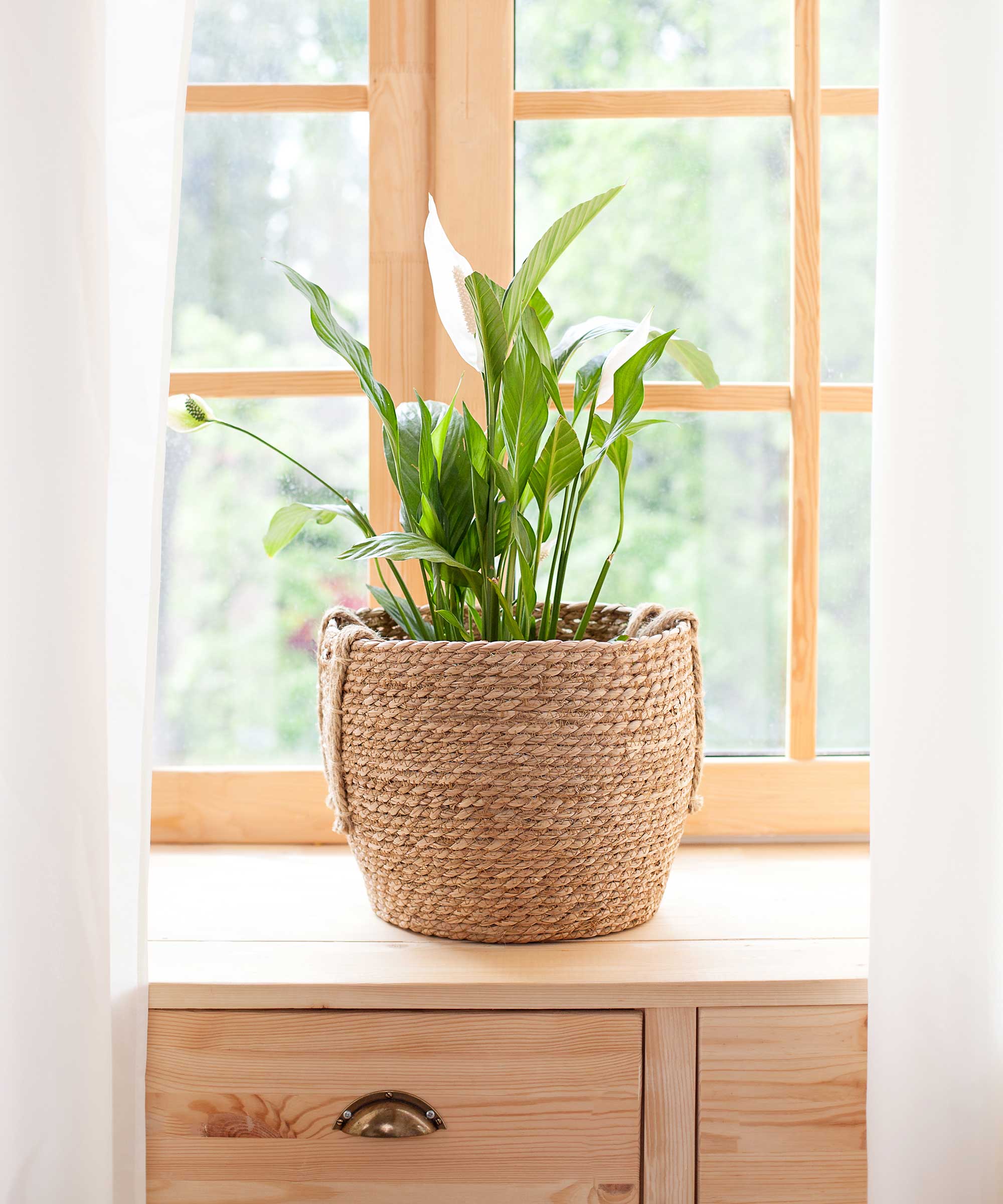
Peace lilies are native to tropical rainforests, and as such thrive in high humidity. A typical home has lower humidity, especially in winter when heats sources such as fires and wood stoves are used regularly.
If the air is too dry or if your plant is exposed to sudden temperature changes, the leaves can become stressed and start to brown.
To increase room humidity, you could use a room humidifier from Amazon, mist plants once or twice a week, or place plants on trays filled with water and pebbles. Make sure the bottom of the pot isn’t sitting in standing water to prevent root rot.
4. Fertilizer

According to Alex Testel, founder of Frugal Frontier, one reason why the leaves on your peace lily are turning brown may be because there is too much fertilizer present. When the roots are exposed to the high levels of sodium found in fertilizer, the soil impedes the plant’s ability to absorb water. This caused the plant tissues to become dry and brown.
To combat this, repot peace lilies in fresh potting soil and reduce fertilizing as needed. Fertilize peace lilies with an all-purpose water soluble fertilizer at half strength once every two months. You can cease fertilizing during the winter months when growth slows down.

Alex Testel is an avid gardener and horticulture expert. At Frugal Frontier, his approach to gardening is anchored in eco-conscious and efficient methods. He specializes in sustainable and practical gardening solutions, empowering others to cultivate their own thriving gardens.
5. Sunlight exposure
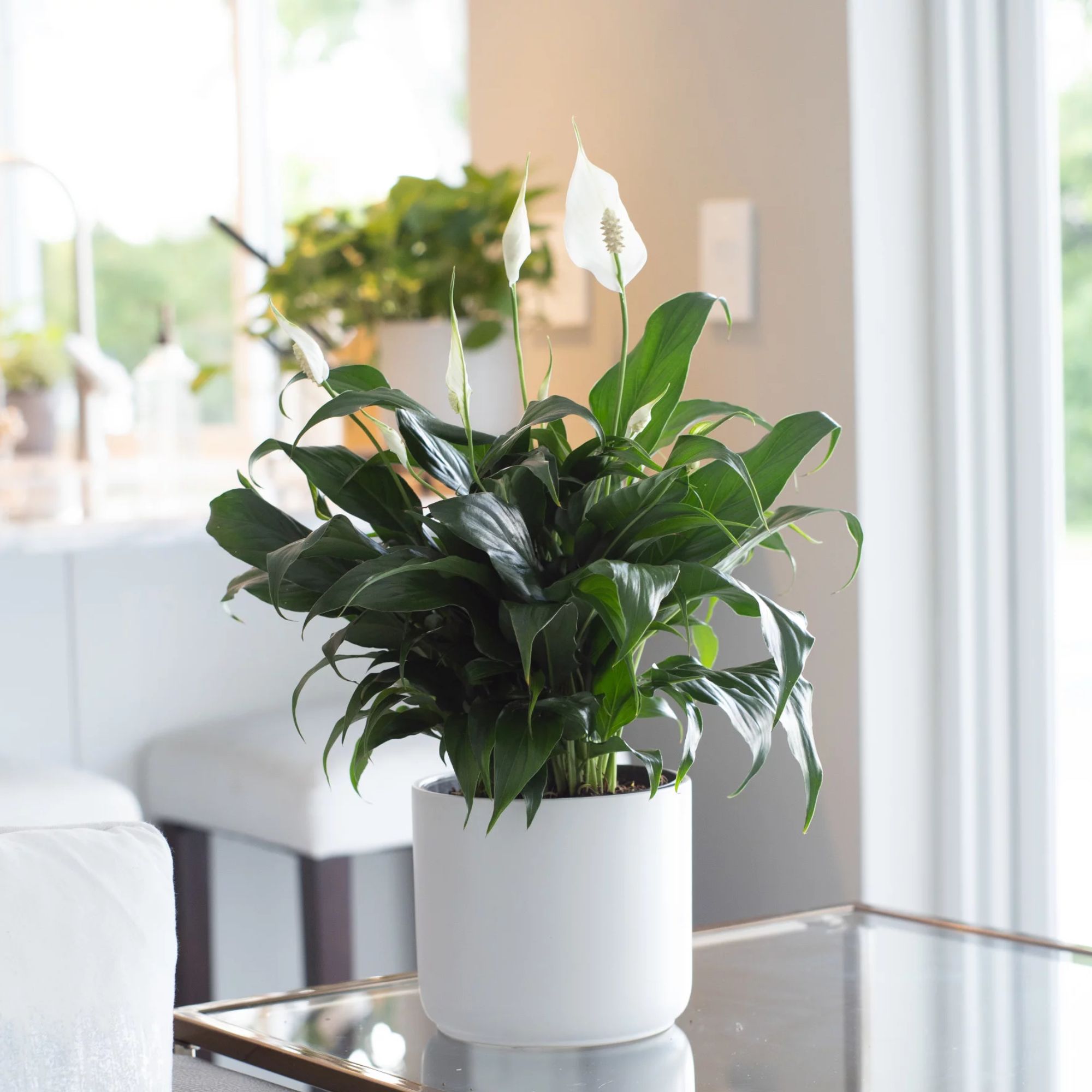
If your peace lily is located in direct sunlight, this may be a reason why its leaves are turning brown.
‘Peace lilies prefer indirect sunlight, says gardening expert Diana Cox. ‘Too much light can cause leaf burn, which will cause browning. Move plants to a spot near a window that gets bright light, but no direct sunlight.’
You can also consider pruning your peace lily. Removing the browning leaves will not only improve the appearance of the plant, but it will also allow the plant to focus its energy on growing new leaves. With a little care, your peace lily should soon be looking lush and healthy again.
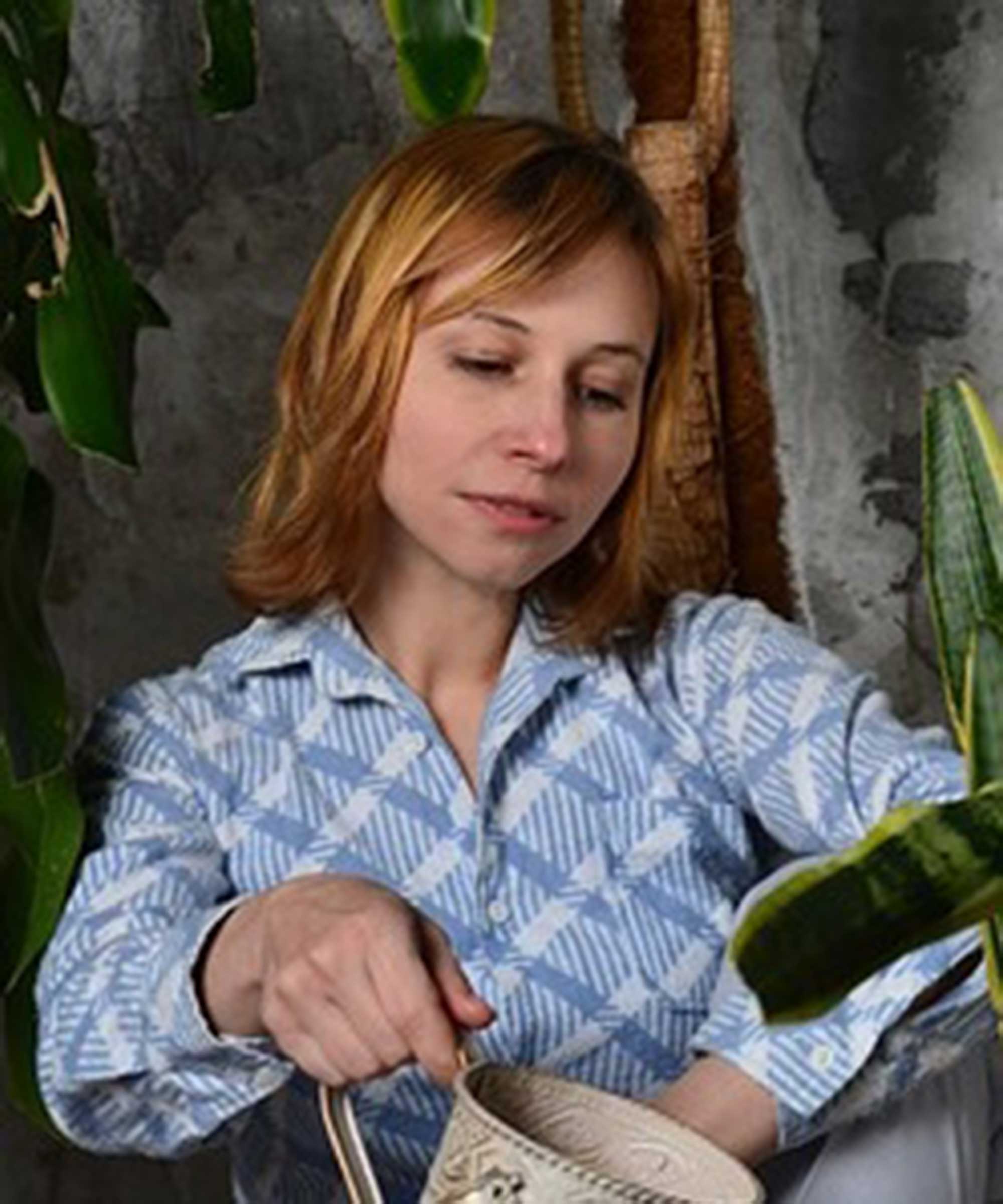
Diana Cox is the proud founder of TheGardeningTalk.com and has over a decade of gardening experience. Through her blog, she aims to inspire and motivate fellow gardeners by sharing practical techniques that are grounded in both personal experience and thorough research.
FAQs
How do you save overwatered plants?
If you have overwatered your plant do not despair - as there are steps you can take to save it.
1. Stop watering: Firstly, stop watering it. While that may be obvious, do not give your plant any more water as it will only make the situation worse.
2. Check drainage: One reason why your plant may be overwatered is because the water cannot drain out effectively. If it isn’t draining correctly, repot your plant into a container with more or larger drainage holes.
3. Give it more air: Move your plant to any area where it can receive greater air flow. This will help the plant dry out but also allow it to absorb moisture from the air itself.
4. Mist the wilted leaves: While your soil is drying out, you should still mist the wilted leaves to encourage repair and regrowth.
5. Water once the soil is dry: Only after all of the water has been drained or fully absorbed by the plant should you return to watering it.
To address the browning leaves, first identify the cause and then adjust your care routine accordingly. Ensure proper watering, adequate humidity, appropriate fertilization, and correct light exposure.
Peace lilies are also sensitive to chemicals in tap water, which can turn leaf tips and edges brown. To combat this, you can allow tap water to sit for a day or two until the chlorine and other chemicals have evaporated, or use distilled water.

Seraphina is a contributing editor at Homes & Gardens, writing Solved features on organizing and storage. She loves to decorate and also grow her own produce from her home in London. Her previous experience includes working at Women's Health and Fabulous Magazine.